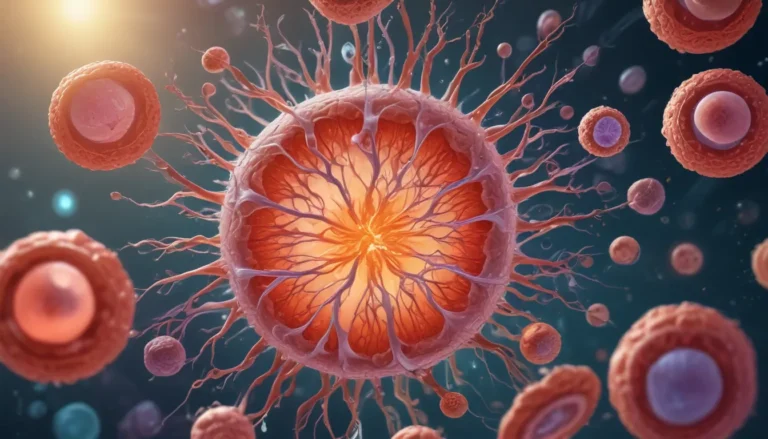A Note About Images: The images used in our articles are for illustration purposes only and may not exactly match the content. They are meant to engage readers, but the text should be relied upon for accurate information.
Embark on a journey through the captivating world of sex determination, where the essence of life is shaped by a complex interplay of genetic, hormonal, environmental, and social factors. From the humble chromosome to the influence of temperature and social interactions, the mechanisms behind how nature determines the sex of living organisms are nothing short of mind-blowing. In this article, we will delve into fascinating facts about sex determination that will leave you in awe of the incredible diversity of life on Earth.
Understanding the Foundations of Sex Determination
When it comes to sex determination, the presence or absence of specific chromosomes in an individual’s genetic makeup is key. In most species, females typically have two X chromosomes (XX), while males possess one X and one Y chromosome (XY). However, the sex determination system can vary among different organisms. Birds, for example, have a ZW system, where females possess ZW chromosomes, and males have ZZ chromosomes.
Gender Flexibility in the Natural World
Some organisms possess the remarkable ability to change their sex in response to changing social or environmental conditions. This phenomenon, known as sequential hermaphroditism, is observed in species like clownfish and wrasses. Additionally, temperature can play a crucial role in sex determination for certain reptiles, such as turtles and crocodiles, through temperature-dependent sex determination (TSD).
Unraveling Unique Sex Determination Systems
Bees exhibit a unique sex determination system called haplodiploidy, where females develop from fertilized eggs and have two sets of chromosomes, while males develop from unfertilized eggs and possess only one set of chromosomes. In contrast, some plants have both male and female reproductive organs within the same individual in a phenomenon known as monoecy or hermaphroditism.
The Intriguing Science Behind Human Sex Determination
In humans, the SRY (sex-determining region Y) gene on the Y chromosome is responsible for triggering the development of male characteristics during embryonic development. Despite the foundational role of chromosomes in sex determination, genetic and hormonal factors also play a significant role in shaping the development of reproductive organs and secondary sexual characteristics.
Environmental Influences on Sex Determination
Environmental factors can significantly influence sex determination in various species. For example, in some fish species like the Japanese medaka, factors such as light, temperature, and social conditions can impact the sex of offspring. Additionally, imprinted genes, which are expressed differently depending on parental inheritance, can also influence sex determination and sexual development.
Exploring the Complexity of Sex Determination
The process of sex determination is a multifaceted interplay of genetic, hormonal, environmental, and social factors. In socially complex species like certain fish and mammals, social interactions and hierarchies can contribute to determining the sex of individuals within a population. Furthermore, some species exhibit environmental sex determination, where the sex of offspring is determined by the incubation temperature of eggs.
Broad Implications of Sex Determination Research
Studying sex determination not only provides insight into the biological process but also has broader implications for reproductive biology, conservation efforts, and medical research. By unraveling the mysteries of sex determination, scientists can gain a deeper understanding of evolutionary strategies, population dynamics, and the adaptability of life on Earth.
Conclusion: The Endless Fascination of Sex Determination
In conclusion, the world of sex determination is an endlessly fascinating realm filled with surprises and complexities. From the evolution of sex chromosomes to the influence of environmental cues and social interactions, the mechanisms that govern how organisms determine their sex are both diverse and intricate. As researchers continue to explore this captivating field, we can expect to uncover even more mind-blowing facts that shed light on the fundamental processes that shape life as we know it.
FAQs
How is sex determined in humans?
In humans, sex is determined by the presence of either XX (female) or XY (male) chromosomes, with the Y chromosome triggering male reproductive development.
What is temperature-dependent sex determination?
Temperature-dependent sex determination is observed in reptiles, where incubation temperature determines the sex of offspring.
Can sex determination be influenced by environmental factors?
Yes, environmental factors like temperature or social interactions can impact sex determination in some species.
Are there organisms that can change their sex?
Yes, some organisms exhibit sequential hermaphroditism, allowing them to change sex during their lifetime.
Do all organisms have a two-sex system?
No, various sex determination systems exist in nature, including systems with more than two sexes or those influenced by environmental cues.
Embark on a journey of discovery into the captivating world of sex determination, where the very foundation of life is shaped by intricate mechanisms and unique characteristics. From the dance of chromosomes to the orchestration of genetic and environmental factors, the secrets of biological gender determination await exploration. Prepare to be amazed and enlightened as we uncover the mind-blowing facts that illuminate the complex tapestry of sex determination in living organisms.






